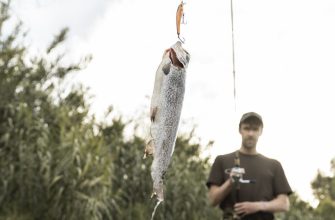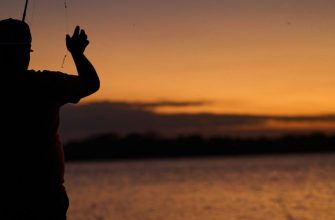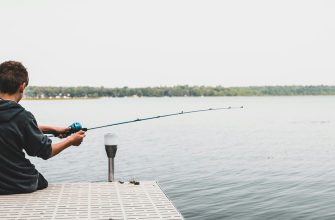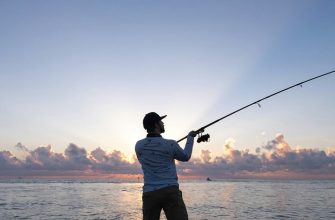- The Richness of Virginia’s Freshwater Fish Resources
- Popular Virginia Freshwater Fish
- Largemouth Bass
- Smallmouth Bass
- Spotted Bass
- Rock Bass
- White Bass
- Striped Bass
- Brook Trout
- Rainbow Trout
- Brown Trout
- Tiger Trout
- Blue Catfish
- Flathead Catfish
- Channel Catfish
- White Catfish
- Crappie
- Redbreast and Green Sunfish
- Yellow and White Perch
- Northern Pike
- Rare and Unique Species
- Eastern Hellbender
- Shovelnose Sturgeon
- The Importance of Conservation of Freshwater Fish in Virginia
- Threats Lurking in Virginia’s Waters
- Battling the Tide Through Conservation
- Sailing Together Towards a Sustainable Future
- Getting Started with Freshwater Fishing in Virginia
- Basic Techniques for Novices
- Rules and Regulations in Virginia
- Ready to Dive In?
- FAQs
- Q: What are some of the native freshwater fish species found in Virginia?
- Q: How many native brook trout can be found in Virginia?
- Q: Which regions of Virginia are known for their diverse fish species?
- Q: What are some of the freshwater fish species found in the Chesapeake Bay in Virginia?
- Q: What are some freshwater fish species that can be found in the Shenandoah National Park?
- Q: Are there any invasive fish species found in Virginia’s freshwater bodies?
- Q: What are the main threats to the native freshwater fish species in Virginia?
- Q: How is the Virginia fishery working to protect and conserve native fish species?
- Q: What are some popular fishing destinations in Virginia for catching native freshwater fish?
- Q: Where can I find more information about the native freshwater fish species in Virginia?
Welcome, beginner anglers, to the marvelous world of Virginia’s freshwater fishing! This region of the United States is a treasure trove of aquatic diversity. From the energetic pickerel to the stunning grass carp, each species here carries a distinct pattern, adding a unique flavor to your fishing sport.

Virginia’s waters are home to numerous fishes. But remember, every angler has a role to play in maintaining this diversity. It’s not just about the thrill of the catch, but also about respecting this wonderful ecosystem we’re privileged to enjoy.
So, let’s dive in, shall we? Get ready to embark on an exciting journey, exploring the geographic diversity of Virginia’s freshwater fishes. Keep in mind, though, this is just an introduction. The real fun begins when you cast your line into the water. Stay tuned, and let’s get fishing!
The Richness of Virginia’s Freshwater Fish Resources
Popular Virginia Freshwater Fish

Largemouth Bass
First up, the Largemouth Bass – an angler’s delight. Known for its disproportionately large mouth, this kind is a celebrated catch among Virginia’s freshwater anglers. They have a penchant for underwater structures, so you’re likely to find them lurking around fallen trees or dense vegetation, using these areas for cover.
When it comes to their diet, they’re not picky. They feed primarily on small fish, insects, and even small aquatic birds. If you’re wondering when the best time to catch them is, mark your calendars for spring. This is the season when they’re busy spawning near the shoreline.
Smallmouth Bass
Next in line, meet the Smallmouth Bass. While they might be smaller than their largemouth cousins, they certainly don’t lack in spirit. These feisty fish are known for putting up a fight, making them a rewarding catch for any angler.
Their preferred hangout spots? Rocky areas with clear water. They’re opportunistic feeders, dining on a variety of diets that include crayfish, insects, and smaller fish. The prime time for smallmouth fishing is in the fall, especially during the tranquil hours of early morning or late evening.
Spotted Bass
Third on our list is the Spotted Bass, also colloquially known as the “Kentucky Bass”. This kind is a crowd-pleaser and a common sight in Virginia’s freshwater bodies. They have a preference for clear, slow-moving water with sandy or gravel bottoms – the perfect spot for a peaceful afternoon of fishing.
Their diet mirrors their bass cousins, and they’re particularly active during the warmer months. So, if you’re planning a summer fishing trip, don’t forget to keep an eye out for the Spotted Bass.
Rock Bass
Next, we introduce the Rock Bass, or “redeye”, as they’re uniquely identified by their red eyes and robust body. They love playing hide and seek among rocks or vegetation in clear, cool streams and lakes.
When it comes to food, these fellows are less picky eaters, munching happily on insects, crayfish, and small fish. They’re most active during spring and early summer, making it the perfect time to add them to your fishing bucket list.
White Bass
The White Bass, known for their silvery-white bodies, are the eloquent swimmers of open water. Their diet primarily consists of small fish, making them a fantastic challenge for beginners. If you’re looking to catch these beauties, the best time is in the late spring when they move upstream to spawn.
Striped Bass
Last but certainly not least, meet the Striped Bass. These majestic swimmers prefer the depths of open water and feed on larger fish. Their popularity among anglers is owed to their impressive size, often reaching over 30 pounds! They’re most active during their fall and spring migrations, making these seasons ideal for catching a Striped Bass.
Brook Trout
The Brook Trout, a native, loves the pristine, chilly waters of Virginia. These finned friends can be found in rivers where the oxygen content is high, keeping them lively and active. Their menu consists of insects, tiny crustaceans, and other petite water dwellers. Their spawning season in the fall is the prime time to catch them, especially in the gravel-laden streams. To entice these fish, use flies or small spinners that resemble their natural prey.
Rainbow Trout
The Rainbow Trout, identifiable by their vibrant hue, are versatile and adapt well to different environments. They have a soft spot for cool, clear rivers and streams. They feed on insects, small crustaceans, and tiny fish. Spring or fall are the best seasons to catch these colorful creatures. Fly fishing is an effective method to hook these beauties, making it a favorite amongst anglers.
Brown Trout
The Brown Trout are often found in larger, warmer rivers of Virginia, but they don’t shy away from the colder waters. Their diet includes insects, small fish, and crustaceans. Fall, particularly their spawning season, is the best time to catch these brown-backed swimmers. Artificial lures and flies can often trick these fish, leading to successful catches.
Tiger Trout
The Tiger Trout, a rare hybrid of the Brook and Brown Trout, is a unique catch in Virginia. They prefer the cool, clear waters and feed on a myriad of aquatic life, including small fish and insects. Fall and spring, the cooler months, are the best times to catch these elusive fish. Anglers suggest using flies or lures that mimic the natural food sources of these fish.
Blue Catfish
The Blue Catfish, a titan of the underwater world, is an enormous kind native to the freshwater bodies of Virginia. Known as one of the heftiest freshwater fishes in North America, these giants can reach impressive sizes. Their preference for deep waters and strong currents makes them a challenging but rewarding catch for any angler.
Blue Catfish are predatory creatures with a dietary preference leaning towards smaller fishes, which makes them apex predators in their underwater ecosystems. They are active throughout the year, but they tend to be easier to catch during the cooler months when they move to shallower waters. The most proven strategy for catching Blue Catfish involves using cut bait. Shad or herring are considered top choices due to their scent and size, which attract these large predators.
Flathead Catfish
Flathead Catfish, intriguingly known as “appaloosas of the deep”, are elusive catches due to their preference for deep underwater holes with slow currents. These fascinating specimens are predominantly nocturnal feeders, hunting primarily live fish under the cover of darkness.
The Flathead Catfish are bottom dwellers, spending most of their life near the river bed. They are most active from spring to fall, with their prime hunting times being at night when they venture out to feed. If you’re keen to catch these heavyweights, using live bait such as small sunfish or shad would be your best bet. The movement of live bait tends to attract the attention of these predators, increasing your chances of a successful catch.
Channel Catfish
Channel Catfish are the adaptable and less finicky members of the catfish family when it comes to their habitat. They are comfortable inhabiting almost any part of the water body, from the deep recesses to the shallow edges. This adaptability extends to their dietary habits as well. They are omnivores, feeding on a diverse array of food sources ranging from plant material to small animals.
The prime fishing season for Channel Catfish spans from spring to fall when the water temperatures are optimal for them. To attract these fish, pungent baits like stink baits or nightcrawlers are recommended. The strong odor of these baits can lure the Channel Catfish, even from their deep hiding spots.
White Catfish
White Catfish are ideal for those who are more inclined towards calm and quiet fishing spots. They prefer the tranquil waters of ponds and small lakes over the fast currents and bustling habitats of rivers. These specimens are opportunistic feeders, dining on a range of food items that come their way, from small fish and insects to plant material.
The summer months offer the best opportunity to catch these shy fishes, as the warmer waters stimulate their feeding activity. To tempt them to your hook, you can use nightcrawlers or dough baits. The movement and scent of these baits can entice the White Catfish, leading to a successful catch.
Read more: Freshwater Fishing in Louisiana: Fish Species and Catching Tips
Crappie
Moving away from catfish, let’s delve into another crowd favorite – the Crappie. These fishes are known for their schooling behavior, often gathering in large numbers around submerged structures. This behaviour can make them an exciting catch as where there’s one, there are often many more.
Crappies have a diet that mainly consists of small fish and aquatic insects, making them important players in maintaining the health of their ecosystems. Crappies are catchable throughout the year, but spring and fall prove to be the best times when they come to shallower waters to spawn. Small jigs or minnows are irresistible to these fishes, making them excellent bait choices. These baits mimic their natural prey, increasing your chances of landing a Crappie.
Redbreast and Green Sunfish
For all our budding anglers out there with an itch to explore Virginia’s bountiful waters, here’s the perfect start – the sunfish. Two types you’ll love to encounter are the Redbreast and Green Sunfish. The Redbreasts are absolute beauties, known far and wide for their vibrant, reddish belly color. Their preferred hangouts? Shallow waters with rocky bottoms, where they can frolic and feed.
Their cousins, the Green Sunfish, are a bit different in their preferences. They love warmer, almost serene waters, where they can often be found snuggled near the shore, nestled among the vegetation, almost playing hide and seek with you.
What about their food habits? Well, both Redbreasts and Green Sunfish aren’t picky eaters. They are happy to munch on a variety of smaller aquatic life, including insects, smaller fish, and crustaceans. For those looking to catch them, the warmer months are your best bet, especially during late spring and early summer, when they are spawning. So, grab some small lures or live bait and you’ll be all set for a successful catch!
Yellow and White Perch
Let’s move on to another set of fascinating inhabitants of Virginia’s freshwater bodies – the Yellow and White Perch. Yellow Perch are a sight to behold, characterized by their golden yellow bodies and dark, vertical stripes. They are lovers of cool waters and are usually found in the deeper parts of lakes and reservoirs, almost like they are playing deep-sea divers.
Now, don’t let the name fool you. White Perch are silvery-gray. They have a soft spot for brackish waters but aren’t averse to freshwater either.
When it comes to food, Perch are omnivorous and have a diverse diet of smaller fish, insects, and shellfish. Their spawning season in the spring is the best time to fish for them. Pack some live bait like minnows or worms and you’ll have a successful catch!
Northern Pike
Finally, let’s talk about a fish that is both intriguing and challenging – the Northern Pike. This fish is known for its long, slender body and sharp, pointed teeth that could give any predator a run for their money. Northern Pikes favor cooler, deep waters with plenty of vegetation for cover. They are aggressive predators, feeding mainly on smaller fish.
You can fish for the Northern Pike all year round, but the best times are in the spring and fall. To catch one, consider using larger lures or live bait. But remember, they are known for their fighting spirit, so be prepared for a good tug on your line.
Rare and Unique Species
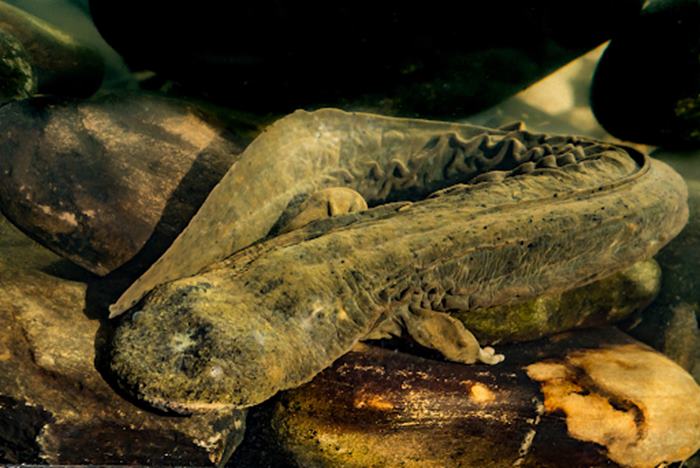
For those looking for a unique catch, Virginia’s waters house several rare varieties.
Eastern Hellbender
The Eastern Hellbender is North America’s largest aquatic salamander, reaching lengths of up to 29 inches. They have a distinctive flat body and brown, wrinkled skin that helps them blend in with their rocky surroundings.
During the colder months, they are less active and often hide under rocks. In warmer seasons, they are more likely to be found moving around at night. They prefer clean, fast-flowing rivers with plenty of large rocks for cover and their diet consists mainly of crayfish and small fish.
For fishing, it’s important to note that they’re a protected species in many areas due to population decline, so catch and release is recommended.
Shovelnose Sturgeon
Another unique catch is the Shovelnose Sturgeon. It is an ancient fish variety that can grow up to 3 feet long. It has a distinctive shovel-shaped snout and a body covered in bony plates instead of scales.
They are more active in the warmer months and are often found in deeper waters during winter. They inhabit large, swift rivers with sandy or gravelly bottoms. Their diet primarily consists of insect larvae, crayfish, mussels, and small fish. Anglers targeting Shovelnose Sturgeon should use heavy tackle and bait such as nightcrawlers or minnows.
However, it’s essential to check local regulations as some areas have protective measures for sturgeon species.
The Importance of Conservation of Freshwater Fish in Virginia

Threats Lurking in Virginia’s Waters
Unfortunately, our fishy friends in Virginia are swimming against a strong current of challenges. One of the most significant threats they face is the release of contaminants into their habitats. These can range from agricultural runoff carrying pesticides and fertilizers to industrial waste loaded with harmful chemicals. These pollutants can have dire consequences for fish, affecting their health, disrupting their natural behaviors, and even altering their reproductive cycles.
In addition to pollution, there’s another threat lurking beneath the surface – invasive kinds. These are non-native varieties introduced into an environment either accidentally or intentionally. Equipped with the ability to adapt quickly, these invaders can outcompete native fish for resources, leading to a decline in native populations. In some cases, they may even prey directly on the native species, leading to a sharp decrease in their numbers.
Battling the Tide Through Conservation
Recognizing the immense pressure on our aquatic ecosystems, several initiatives are already underway in Virginia to turn the tide. These efforts range from stringent regulations to control pollution to active measures aimed at managing invasive species.
Read more: Exploring the Largest Freshwater Fish in the World: 12 Species from Sturgeon to Alligator Gar
There are also robust programs in place to monitor the health of our fish populations and their habitats. These studies provide crucial data that help in designing effective conservation strategies and gauging their success.
Finally, there’s a growing emphasis on habitat restoration. By rehabilitating damaged waterways and creating new ones, we can provide our fish with a safe and healthy place to thrive.
Sailing Together Towards a Sustainable Future
The magnitude of the challenges we face might seem overwhelming, but remember, every journey begins with a single step. And in this case, each one of us can contribute to the preservation of our state’s unique aquatic biodiversity.
Whether it’s participating in local clean-up drives, reporting sightings of invasive species, or practicing responsible fishing, each action counts. You could also spread the word about the importance of conservation among your friends and family or support organizations working towards this cause.
Our collective efforts can create ripples of change that, over time, can transform into a wave of positive impact. So, let’s do our part, and ensure that Virginia’s inland waters continue to be a sanctuary for a vibrant variety of fish for generations to come.
Getting Started with Freshwater Fishing in Virginia
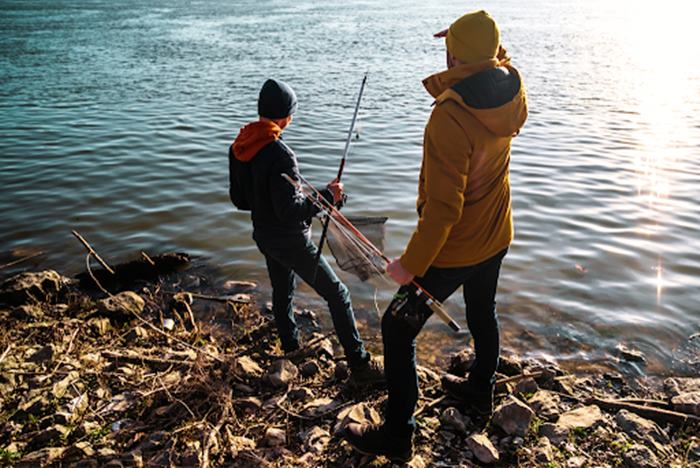
Basic Techniques for Novices
If you’re looking to take up a new hobby, you’ve come to the right place. Fishing is a time-honored tradition in Virginia, and there’s no better time than now to get started. Whether you’re longing for a peaceful escape or seeking an exciting new adventure, fishing offers the perfect blend of tranquility and thrill.
Bait fishing is an excellent starting point for any novice angler. This method is as straightforward as it gets. You hook a piece of bait, cast your line into the shimmering water, and wait for the fish to bite. It’s a patient man’s game, but the satisfaction of landing your first catch makes it all worthwhile. Local favorites like the largemouth bass and the bluegill are commonly caught using this method.
If you’re up for a bit more of a challenge, lure fishing could be your next step. This technique requires a smidge more skill and strategy, as you’ll need to mimic the movements of the fish’s prey to entice them to bite. It may seem daunting at first, but a little persistence will go a long way. Before you know it, you’ll be reeling in your catch with the best of them.
Rules and Regulations in Virginia
Before you grab your tackle box and head out the door, there are a few things you should know. Fishing isn’t just about unwinding and having fun; it’s also about respecting the environment and preserving our natural resources for future generations.
In the beautiful state of Virginia, anyone over the age of 16 must have a fishing license. But don’t let that deter you. Obtaining a license is a simple process that can be done online, and the funds contribute directly to the conservation of our precious water bodies and fish populations.
It’s also crucial to familiarize yourself with the specifics of local fishing regulations. Each state has its own rules regarding fishing seasons, catch limits, and approved fishing methods. So, do your part by ensuring you’re fishing responsibly.
Ready to Dive In?
Starting a new hobby can be daunting, but the world of fishing welcomes all with open arms. It’s a world where patience is rewarded, where respect for nature is paramount, and where the thrill of the catch keeps you coming back for more. So, are you ready to embark on your fishing journey in Virginia? We can’t wait to welcome you into the fold. Here’s to clear skies, calm waters, and plenty of bites. See you out there, fellow angler!
FAQs
Q: What are some of the native freshwater fish species found in Virginia?
A: Some native freshwater fish species in Virginia include the Roanoke bass, creek chub, American shad, river herring, brook trout, walleye, and many others.
Q: How many native brook trout can be found in Virginia?
A: There are approximately 8 million native brook trout in Virginia’s streams and rivers.
Q: Which regions of Virginia are known for their diverse fish species?
A: The Southwestern and southern regions of Virginia are known for their diverse fish species, particularly in the rivers and lakes.
Q: What are some of the freshwater fish species found in the Chesapeake Bay in Virginia?
A: The Chesapeake Bay in Virginia is home to a variety of freshwater fish species including white crappie, river herring, and walleye.
Q: What are some freshwater fish species that can be found in the Shenandoah National Park?
A: In the Shenandoah National Park, visitors can spot native brook trout, darters, and various other fish species that are unique to the area.
Q: Are there any invasive fish species found in Virginia’s freshwater bodies?
A: Yes, Virginia’s rivers and lakes are home to invasive fish species such as northern snakehead, gar, and Alabama bass, which have been known to disrupt the natural ecosystem.
Q: What are the main threats to the native freshwater fish species in Virginia?
A: The main threats to native freshwater fish species in Virginia include habitat loss, overfishing, pollution, and the introduction of invasive species.
Q: How is the Virginia fishery working to protect and conserve native fish species?
A: The Virginia fishery employs conservation measures such as habitat restoration, stocking programs, research on fish populations, and regulations to protect and conserve native fish species.
Q: What are some popular fishing destinations in Virginia for catching native freshwater fish?
A: Some popular fishing destinations in Virginia for catching native freshwater fish include numerous lakes, the Shenandoah National Park, George Washington and Jefferson National Forest, and the rivers in the South and Southwestern regions.
Q: Where can I find more information about the native freshwater fish species in Virginia?
A: Biologists and researchers in Virginia publish articles, reports, and studies on native freshwater fish species. Additionally, information can be found on the Virginia Department of Wildlife Resources and the Chesapeake Bay Program website.

